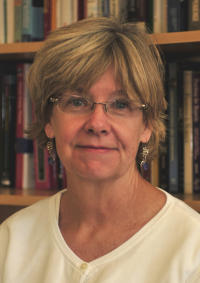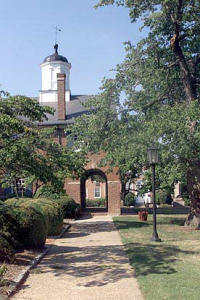
|
The Mathematical Association of America Maryland-District of Columbia-Virginia Section |
- Home
- History
- Main History Page
- Section History Document
- List of Past Officers
- Charter Members
- African-American Participation
- Stories from Section Members
- Section NExT Fellows
- Obituaries
- Smith Award Recipients
- Christensen Award Recipients
- Meritorious Service Award Recipients
- Undergraduate Award Winners
- Meeting Archive
- Past Meetings
- Talk Archive
- Old Section NExT Programs
- Newsletter Archive
- Meeting Minutes Archive
- Miscellaneous Documents
- Meetings
- Minutes
- Fall 2024 Executive
- Fall 2024 Membership
- Spring 2024 Executive
- Spring 2024 Membership
- Fall 2023 Executive
- Fall 2023 Membership
- Spring 2023 Executive
- Spring 2023 Membership
- Fall 2022 Executive
- Fall 2022 Membership
- Spring 2022 Executive
- Spring 2022 Membership
- Fall 2021 Executive
- Fall 2021 Membership
- Spring 2021 Executive
- Spring 2021 Membership
- Fall 2020 Executive
- Fall 2020 Membership
- Fall 2019 Executive
- Fall 2019 Membership
- Spring 2019 Executive
- Spring 2019 Membership
- Fall 2018 Executive
- Fall 2018 Membership
- Spring 2018 Executive
- Spring 2018 Membership
- Fall 2017 Executive
- Fall 2017 Membership
- Spring 2017 Executive
- Spring 2017 Membership
- Minutes Archive
- Newsletters
- Section NExT
- Awards
- Students
- Links
- Search
Fall 2010 Meeting at George Mason University
The Friday afternoon workshop was by David Neel from Seattle University, Borges, Novels, and Maths! Oh My!, and Betty Mayfield from Hood College gave the Friday evening banquet address Women and Mathematics in the Time of Euler. On Saturday Chris Danforth from the University of Vermont presented Chaos and the Mathematics of Prediction: from Hurricanes to Climate Change and David Neel presented The Many Masks of Matroids. Invited Addresses
David NeelSeattle UniversityWorkshop: Borges, Novels, and Maths! Oh My! Abstract: Too many undergraduates end up believing, permanently or just for far too long, that mathematics has little to say to or hear from other ways of knowing. One way to combat this would be to incorporate more mathematics across this curriculum, but what of the complementary approach: incorporating the study of other fields into the study of mathematics. We will begin with some specific examples and readings that have been used in a linked pair of courses, Math 107: Mathematical Reasoning for Humanities Majors and English 120: Introduction to Literature, but ample time will be provided for discussion of additional appropriate literary possibilities, for ways to better connect a stand-alone course, and especially for other possibly beneficial pairs of linked courses. Invited Address:: The Many Masks of Matroids Abstract: They lurk, they wait, peeking from behind the familiar. Matroids are combinatorial objects related to graph theory, to linear algebra, to ordered sets, and yet they remain subtle and surprising despite the intuitions we bring from those fields. We will introduce these accessible-yet-challenging objects and a few of the ways to think about them. Biographical Sketch: David Neel is an associate professor at Seattle University, where he works to reconcile his love of literature and mathematics, in part by teaching half of a pair of linked introductory courses in those two fields. His scholarly work is in combinatorics, specifically graph theory and matroid theory, including the introductory survey "Matroids You Have Known" (with Nancy Neudauer) in the February 2009 issue of Mathematics Magazine. In his spare time he likes writing short bios for himself, in which he usually notes his appreciation for David Foster Wallace, tennis, Kid A, single-origin drip coffee, and Islay scotch. 
Betty MayfieldHood CollegeBanquet Address: Women and Mathematics in the Time of Euler Abstract: The life and work of Leonhard Euler have been widely celebrated, especially in the years surrounding his 300th birthday in 2007. During that summer, former Hood professor Kimber Tysdal and I supervised a group of students in an undergraduate research project. We discovered some interesting and unusual things about the intersections of the seemingly disparate topics of women, mathematics, and Euler. Biographical Sketch: Betty Mayfield has been a member of the MD-DC-VA Section since 1979, when she began teaching at Hood College. She has served as newsletter editor, chair, and governor of our Section, and as first vice president of the MAA. She is currently the chair of the Association's Council on Meetings and Professional Development, following in the footsteps of the late Howard Penn, another MD-DC-VA Section member. This talk combines her love of the history of mathematics with her interest in the participation of women in math. 
Chris DanforthUniversity of VermontInvited Address: Chaos and the Mathematics of Prediction: from Hurricanes to Climate Change Abstract: For centuries, scientists have developed increasingly sophisticated mathematical models in an attempt to uncover the rules by which the physical world evolves. Their ultimate goal is not only to understand the nature of the systems they observe, but to predict how they will behave in the future. In this talk, we use simple examples to demonstrate the difficulties and recent advances in prediction of various physical phenomena including the path of Hurricane Katrina, next week's weather, and the global mean temperature in 2100. Biographical Sketch: Chris Danforth received a B.S. in math and physics from Bates College, and a Ph.D. in Applied Mathematics and Scientific Computation from the University of Maryland. He is currently on the faculty of the University of Vermont where his work is on modeling and predictability of a variety of biological, natural, and physical systems. His research has been covered by the New York Times, Science Magazine, and the BBC among others. Descriptions of his projects are available at his website: http://www.uvm.edu/~cdanfort/ |
Copyright © 2012 - The Mathematical Association of America
Please send comments, suggestions, or corrections for this page to Brian Heinold at heinold@msmary.edu
Last Modified: 03/05/2012 - 09:16pm
 The Fall 2010 meeting of the section was held on November 5-6, 2010 at
The Fall 2010 meeting of the section was held on November 5-6, 2010 at